Fixed Orifice Tubes
An automotive air conditioning system contains a metering device that lowers the pressure of the refrigerant to the evaporator core. The (TXV) thermostatic expansion valve and the (FOT) fixed orifice tube are the most common metering device types.
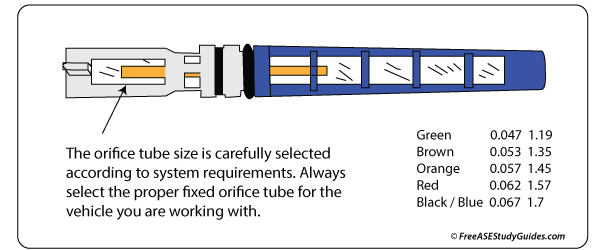
A fixed orifice tube contains a small brass tube encased in a plastic case with a filter at each end to protect it from debris in the system. It's in the liquid line between the condenser and the evaporator core. It is usually easy to locate because the manufacturers put a crimp in the line to keep the orifice tube from traveling down the tube toward the evaporator core.
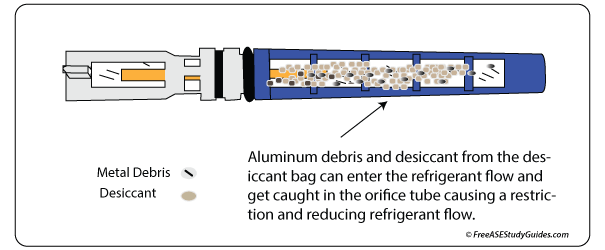
The tube is sometimes tricky to remove with needle-nose pliers. A special tool is available to pull stubborn orifice tubes. Often, there is debris in the inlet filter. Metal debris is typically from compressor wear, and gooey debris is usually from a ruptured accumulator desiccant bag.
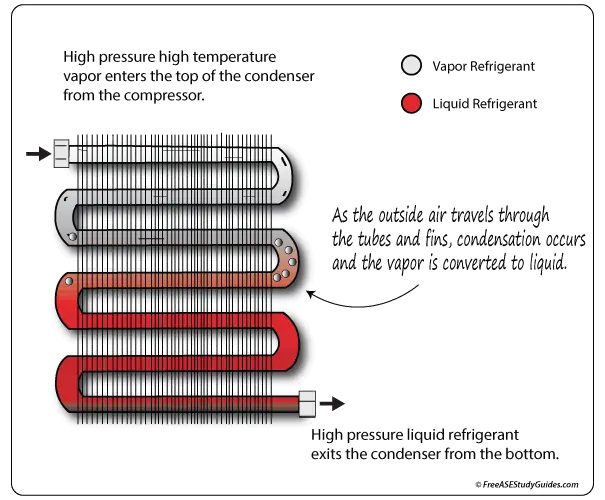
At idle, the condenser has less airflow across its surface. It causes head pressure to increase. It can cause the vaporized refrigerant to flow from the condenser through the orifice tube.
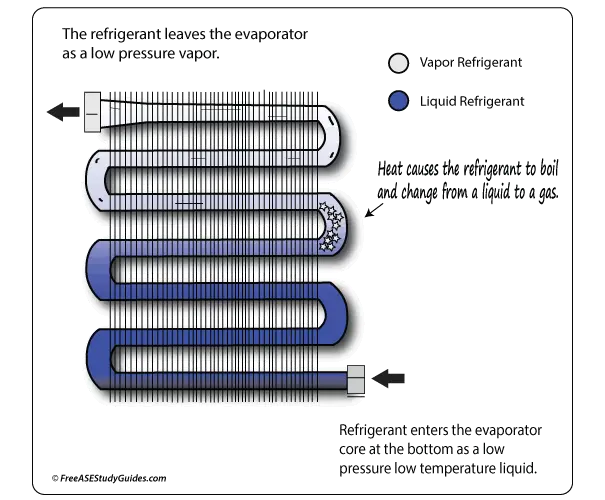
At low speed and idle conditions, the refrigerant rapidly moves through the condenser, sending high-temperature vapor and liquid to the orifice tube. Vapor entering the orifice tube will reduce the effectiveness of the refrigerant. Subcooled liquid (not vapor) entering the orifice tube is ideal for flooding the evaporator core of a CCOT system.
Variable Orifice Tubes
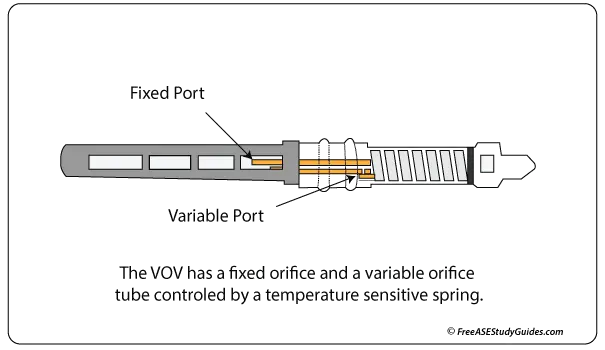
A variable orifice valve resembles a fixed orifice tube. It can change output depending on different operating conditions. A fixed orifice tube can not change to meet highway, stop-and-go, and idle performance.
With a VOV at idle, a bimetal control spring blocks off one of two ports, reducing the refrigerant flow and allowing more heat to be removed in the condenser. As speeds increase, the valve opens back up, allowing maximum flow through the system again. It improves performance over a fixed orifice tube at low speeds and idle while still providing a high level of performance at highway speeds.